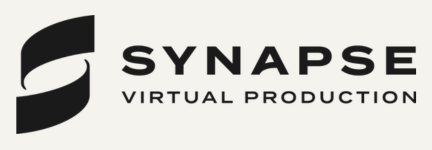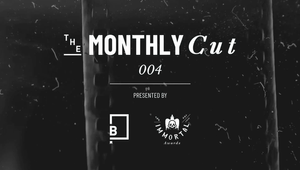
Adland Ageism an “Open Secret”, Worsening Thanks to AI

Advertising and marketing prides itself on being an industry obsessed with new – new ideas, new platforms, new talent. But in that pursuit, experience can take a back seat.
Ageism remains one of adland’s open secrets: while campaigns celebrate diversity and inclusivity on screen, behind the scenes, many seasoned professionals find themselves overlooked in favour of younger hires.
As a strategist in her late forties, Lucy Halley, executive head of strategy at Havas Helia, said she has “spent decades helping brands understand people. Yet our own industry – where only 6% of staff are over 50 – is often blind to the value of its people as we age.”
“Ageism is an open secret in advertising. Nearly 80% of us agree it exists. Over 40% have seen it firsthand, the London-based strategist said.
“For women, it hits earlier and harder – talked over in meetings, overlooked for promotion, feeling we have to hide our age or caregiving roles to stay relevant. Some report facing age barriers 20 years before their male peers.”
Lucy said if agencies truly want to value older talent, they need to start valuing what experience brings. This includes “resilience earned through recessions and reinventions, empathy sharpened by life, the power to listen deeply, the ability to mentor without ego, the strength to hold space in rooms where ideas feel fragile.”
In Australia, The Experience Advocacy Taskforce (EAT) was formed in 2022 in response to a startling statistic: at the time, while 40% of Australians were aged 45+, just 6% of people working in creative agencies were over 50.
Linda Robson, core committee member of EAT and co-founder of The Hummingbirds, told LBB since EAT’s launch, the organisation “has sparked open industry conversations, seen agencies reassess hiring practices, and inspired more inclusive briefs and ad casting.”
“Ageism shows up through youth-obsessed hiring practices, and the perception that older workers are less digitally savvy or creatively relevant,” she said. EAT’s 2024 ‘The Silent Exit Report’ research indicates more than half (51.5%) of ad industry exits were people aged between 45 and 54, “signalling a significant talent drain of experienced professionals from the advertising industry.”
“Plus, older audiences are also frequently stereotyped or overlooked in campaign targeting,” she added.
“More recently, AI has had a huge impact on recruitment of more experienced industry professionals with algorithms knocking out candidates before a human eye has even viewed an application.”
As well as AI, Josianne Côté, executive producer and founder of Bungalow 5 in Los Angeles, told LBB the pandemic “created a five-year experience gap for many younger editors and talent across advertising.”
“This generation missed out on the kind of hands-on learning that happens in the room with seasoned professionals; moments that shape instincts, taste, and decision-making.
Josianne added the ageism “is especially ironic because editing is a craft that can only be mastered through practice in real time."
“Most people don’t truly understand the difference between good, great, and outstanding editing – it can take over a decade to see that clearly. Put simply, editors are like good wine: they get better with time. The key is staying current with evolving aesthetics.
“That’s not to say younger editors aren’t capable. But experience is experience and you can’t fake it. Editing at the highest level requires more than technical skill. It’s about judgement, restraint, and nuance, which only come with time. I’ve never seen outstanding editors emerge straight from school.
“It’s like the difference between watching Instagram reels of Italy and actually going there. Until you’ve walked those streets yourself, you won’t feel it. The same goes for editing. You have to live it to truly know it.”
Lucy argued the industry needs to challenge structural bias.“in hiring, in team composition, in the stories we tell clients about who culture belongs to. Agencies that build age-diverse teams don’t just do the right thing. They do better work.”
Equality in hiring processes is something Melanie Stegemann, director human resources at Havas Germany, spends a lot of time considering. Although she said ageism “is often a less visible form of bias,” the team “make[s] a conscious effort to address it as part of our DEIB strategy.
“We closely monitor age demographics and make sure our recruitment practices use inclusive, experience-based language. In line with our inclusive casting principles, we avoid vague or stereotypical terms that might imply age preferences and instead clearly outline the scope and the level of experience required.
“Beyond recruitment, we focus on fostering meaningful intergenerational collaboration within teams and are working to ensure that experienced professionals feel valued and included. Not only in traditional leadership roles, but also as mentors, specialists or active contributors to a diverse and dynamic workplace. While this is an area we continue to evolve, we’re committed to creating opportunities for growth, recognition and engagement at every stage of a career.”
One of the biggest hurdles is unconscious bias, “especially in an industry like advertising, where everything moves fast and there’s often a strong focus on what’s new and next,” said Melanie.
“There’s this unspoken link between innovation and youth, which can unintentionally overshadow the strategic clarity, resilience and emotional intelligence that experienced professionals bring to the table. As part of our DEIB (Diversity, Equity, Inclusion, and Belonging) guidelines, we try to make these biases more visible and build awareness for the patterns they create. A lot of it comes down to language: how we describe roles, how we talk about potential and what kind of experience we value. Because it shapes who feels seen and who feels like they belong.”
No Single Individual founder and CEO, Christine Olivas, agreed “unconscious bias plays a significant role in talent evaluation and hiring choices,” adding “older talent in particular seems to be treated differently than their younger counterparts.
“There’s less respect for proven expertise, especially because it comes with a higher price tag, and a greater willingness to empower younger voices in a race to stay ‘fresh’ and ‘cutting-edge.’ This general devaluing of experience is an industry-wide trend, one that will slowly erode the median quality of all work if we don’t reassess our long-term priorities now.”
Christine also said age plays a role in who gets to work on what, with “a clear bias towards assigning younger and fresher workers the hot briefs, the major brand work for trendy clients.
“They’re perceived to be more in tune with the culture, with what’s in style, with the vocabulary of a new generation of consumers. Meanwhile, older workers are often assumed to be a better fit for legacy brands.
“There’s this unsubstantiated perception that older creatives are passé, resting on earned laurels with little incentive, or ability, to deliver groundbreaking work. I’ve heard of older strategists being overlooked because they’re not ‘agile enough’ or ‘committed to the work’ – the latter often code for having family responsibilities outside of the job. I completely disagree with these characterisations, not just based on my own experience, but common sense.”
So what can actually be done to tackle ageism? Natalie Ackerman, chief people officer at Jack Morton, said, “As individuals, as leaders and as collective groups we have work to do to build true intergenerational inclusivity. We also have a massive opportunity to learn from each other.
“We can’t make progress unless you recognise what’s going on and challenge assumptions. It’s time to put stereotypes to bed. Anytime you lump people together and treat their behaviours or beliefs as a monolith – you fall into a bias and stereotype trap.”
Bringing these issues into the light is also crucial, with Natalie adding we need to “talk about it – teach everyone this exists and put a name to it.”
Alison Richardson, associate director, leadership development, diversity and employee engagement at IPG’s Momentum Worldwide, said there are three steps employers can take to “begin to build age-inclusive workplaces”: make addressing it a business priority; prepare HR teams and managers to drive change; and empower all employees to foster a culture of belonging.
“Companies can remove language that demonstrates a preference for younger applicants from job descriptions, ensure job posts are publicised on age-inclusive platforms, use standardised interview questions during the recruitment process, consider the perspectives of team members from across age groups when making hiring decisions and ensure employees have equitable access to development opportunities.”
Companies that get it right can “help alleviate the emotional and financial toll ageism can have” and put themselves in a position to make better, more effective work.
“They can strengthen their ability to help brands understand, authentically represent and connect with 50-plus consumers, who are a large group with considerable spending power,” Alison said.
“Addressing ageism makes business and human sense.”















